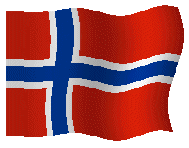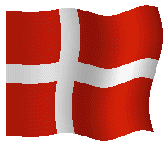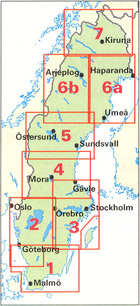






An overnight ferry crossing of a calm North Sea from Newcastle to Stavangar was followed by spectacular morning views of the Norwegian coastline on the cruise north to Bergen.
Disembarking at Bergen we drove northwards on narrow twisting roads to camp at Voss.
Next day, on the first of many ferries, an integral part of the Norwegian road system, a cruise of some two and a half hours through the Sogne Fjord, the worlds longest and deepest fjord, with its surrounding, snow-capped peaks took us from Gudvangen to Kaupanger.
From Kaupanger the road climbed up and through the snowfields and peaks of the Jotunheim mountain range. After descending the far side the climb had then to be repeated to reach Spitzespulen, a climbing centre within the Jotunheim.
Galdhopiggen ( 2469m, 8100 feet ) the highest mountain in Norway was climbed to gain a superb panoramic outlook over the surrounding Jotunheim range.
A short journey through Lom and Hjerkin brought us further north to the isolated Snohetta ( 2286m, 7,500 feet ) where a poled route led us across rough boulder fields and snowslopes to the summit.
Two days driving, passing through Trondheim, was then necessary to reach our next climbing objective in the Okstinden Ice Field. We made a high camp beneath the glacier and in the morning scaled the steep slopes above to gain an impressive view of the ice-cliffs at the snout of the glacier.
A lateral moraine and snowfields led up onto the ice field and we traversed a mile or so across the glacier to climb one of the several small peaks rising from the extensive level surface to achieve a real "roof of the world" sensation.
From Okstinden our journey continued northwards through picturesque scenery, crossing the Arctic Circle, passing through Narvik, and requiring two ferry crossings to reach Tromso, the most northerly point of our route, lying exactly on a latitude of 70 degrees north. We had been experiencing the disconcerting phenomenon of perpetual daylight since our first night in Norway.
Leaving Tromso we drove through the remote and desolate countryside of arctic Lappland with isolated small settlements and herds of reindeer to cross the border into Finland.
A free ferry crossing from Finland at Kaaresuvanto brought us into Sweden where we continued to Kiruna.
From the top of one of the local iron ore bings on a somewhat cloudy evening we were lucky to catch a glimpse of the midnight sun.
The final climb on our itinerary was an ascent of Kebnekaise ( 2117m, 7000 feet ) the highest mountain in arctic Lappland. This involved a 12 mile trek with full climbing and camping gear along the King's Trail to reach the base below Kebnekaise.
On the ascent on the second day of our mini expedition the final stretch towards the summit was unfortunately in heavy mist and no views were obtained.
A third day was required for the walk-out back to Kiruna to complete our climbing program.
Driving south through Sweden through extensive, mosquito-ridden, conifer forests we stopped off in Stockholm, the Venice of the North, for some sightseeing before crossing to Copenhagen in Denmark to visit the renowned Tivoli Gardens.
A seventh ferry crossing took us from Denmark into Germany. Our journey then led through Holland, Belgium, with some sightseeing in Brussels, and France before a final ferry across the English Channel and the long drive back to Scotland.
- Scandinavia - Photo Gallery
- Map of Norway
- Map of Sweden
- Travel & Guide Books & Maps - Scandinavia
- Travel & Guide Books & Maps - Europe
- Climbing, Ski-ing & Mountaineering Books
- Maps and guides from Maps Worldwide
- Jotunheimen
- Okstindan
- Lonely Planet - Norway
- Lonely Planet - Finland
- Lonely Planet - Sweden
- Lonely Planet - Stockholm
Google Ads
 |